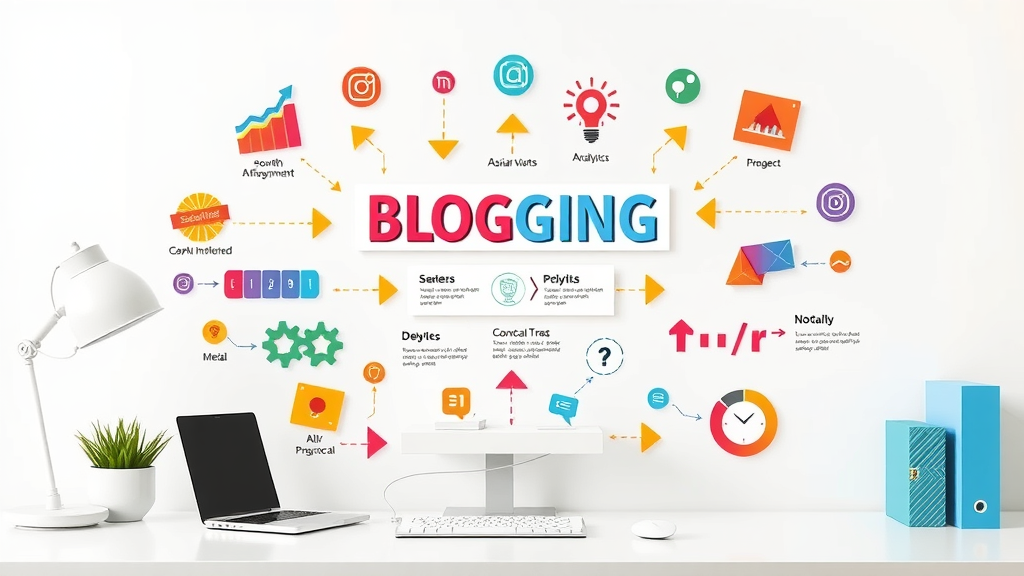Imagine turning every $1 spent into $42— that’s the average ROI for successful email marketing campaigns . If you’re not unlocking this instant sales potential, your competitors likely are. Dive in as we reveal the proven playbook for launching email campaigns that convert immediately and build customer relationships that last.

The Immediate Impact of Email Marketing Campaigns on Sales
Businesses searching for rapid sales growth often overlook one of the most immediate and scalable strategies: email marketing campaigns . Whether you’re a startup or an established brand, email marketing offers direct access to an audience already interested in your products or services. When executed correctly, a strategic email marketing campaign isn’t just about delivering messages—it’s about generating sales within minutes of delivery. This instant connection allows you to time your promotions with precision, synchronize with product launches, and capitalize on seasonal trends.
"Did you know that for every $1 spent on email marketing campaigns, the average ROI is $42? Discover how you can harness this power instantly for your business."
Effective email marketing leverages open rate optimization , conversion-focused copy, and clever automation to deliver results fast. By designing your marketing campaigns to be visually compelling, mobile-optimized, and personalized based on subscriber data, you ensure that each recipient receives the right message at the right time—maximizing the chance to drive sales on the spot. From flash sales to time-limited discount codes, a well-timed marketing email can increase sales in ways that other digital marketing channels struggle to match.
Unlocking the Secrets of Effective Email Marketing Campaigns
Why email marketing campaigns work for instant sales
How to craft compelling subject lines in your marketing campaign
The role of email template design in successful email marketing
Best practices for automated email marketing campaigns
Email marketing campaigns thrive because they land directly in your audience’s inbox—a space people check multiple times daily. Behavioral triggers, such as abandoned cart reminders or promotional emails , utilize automation to catch customers at the right buying moment. A thoughtfully crafted campaign not only captures attention with a strong subject line but also sustains interest through an enticing email template and impactful email copy.
The importance of design cannot be overstated: an engaging email template boosts brand awareness and guides readers to your call-to-action seamlessly. Further, best practices like clear segmentation, A/B testing of subject lines, and using a series of emails for nurturing leads all contribute to higher conversion rates and ROI. Following these principles ensures your marketing email works hard to deliver instant and long-term results.

Exploring the Types of Email Marketing Campaigns That Convert
Identifying the types of email marketing campaigns that drive the highest conversions is vital to optimizing your marketing strategy. Some campaigns are designed to introduce your brand, while others are focused on reclaiming lost revenue or reigniting dormant customer relationships. Knowing which email campaign type to deploy—and when—can make the difference between merely sending emails and consistently increasing sales.
Let’s delve into the most effective formats: from welcome sequences that set the stage for loyalty, to promotional emails engineered for urgency, abandoned cart interventions rescuing lost revenues, and re-engagement campaigns that revive your subscriber list. Each category has its best practices to ensure high open rates and sales impact.
Welcome Email Campaigns: Making a Memorable First Impression
The welcome email campaign is your digital handshake. As the first interaction after someone joins your email list, this message sets expectations, introduces your value proposition, and kickstarts a loyal customer relationship. Data shows that personalized welcome emails boast the highest open rates among all types of email. With an open rate that can exceed 57% , a compelling subject line, and an engaging email template, the welcome campaign makes that all-important first impression—often leading to immediate conversions or deeper engagement.
For optimal impact, send your welcome email instantly upon subscription. Include a special discount code or exclusive offer in your email copy to provide immediate incentive. Remember, a well-designed welcome marketing email forms the foundation for future customer interactions and sets the tone for the rest of your marketing campaigns.
Promotional Email Campaigns: Strategies That Spark Action
Promotional email campaigns are engineered to deliver compelling offers and time-limited deals directly to your subscribers. These emails create a sense of urgency, leveraging FOMO (fear of missing out) to spur action. Whether it’s a flash sale, product launch, or exclusive discount code, the design of your promotional email—especially its subject line and call-to-action—can dramatically influence both open rates and sales conversions.
To maximize impact, target specific email list segments with relevant offers and tailor content based on purchase history or expressed interests. Integrate high-converting elements like countdown timers or personalized recommendations. By communicating value quickly and presenting irresistible deals, your promotional email drives sales and increases the overall performance of your marketing campaign.

Abandoned Cart Email Campaigns: Recover Lost Revenue
Abandoned cart email campaigns are essential for eCommerce businesses seeking to recover revenue that might otherwise slip away. When a customer leaves items in their cart without checking out, a series of automated emails can remind them to complete their purchase. These reminders typically include product images, benefit-driven email copy, and often a last-minute discount code—all personalized to increase sales.
The conversion rate for abandoned cart emails can reach up to 45% . Timing is critical: the first email should be sent within an hour of abandonment, followed by a well-structured sequence to gently nudge the customer. The combination of personalization, urgency (e.g., “your cart is reserved for a limited time”), and clear calls-to-action makes the abandoned cart marketing campaign one of the most lucrative in the email marketing arsenal.
Re-Engagement Email Campaigns: Winning Back Inactive Subscribers
Not all subscribers remain engaged forever. Re-engagement email campaigns focus on winning back those who have gone silent, using tailored email copy to rekindle interest. By segmenting your list to target inactive subscribers and offering fresh value—be it exclusive insights, discounts, or just a reminder of what they’re missing—your marketing campaigns can turn dormant contacts into active customers once more.
Best practices include using compelling subject lines such as, “We Miss You!” or “Is This Goodbye?” coupled with a personalized call-to-action. Even if only 20% respond, that’s a list segment transformed from dormant to profitable, contributing to the sustained success of your email marketing campaign.
Comparison of Email Campaign Types | |||
Type |
Features |
Conversion Rate |
Best Practice |
|---|---|---|---|
Welcome Email |
Personalized introduction |
57% |
Immediate send |
Promotional Email |
Exclusive offers |
36% |
Time-limited deals |
Abandoned Cart Email |
Reminder & Incentive |
45% |
Follow-up sequence |
Re-engagement |
Win-back incentives |
20% |
Segmentation |
Crafting a High-Performing Email Marketing Strategy
A winning email marketing strategy involves more than just sending bulk messages. It’s about building the right email list , nailing the subject line, designing high-impact templates, and writing copy that motivates clicks. Each of these steps is vital to delivering a campaign that not only reaches inboxes but drives measurable results.

Building a Quality Email List for Email Marketing Campaigns
Your email campaign’s success hinges on the quality of your email list. A targeted, opt-in list composed of engaged subscribers guarantees higher open rates, reduced spam complaints, and better deliverability. This starts with enticing list-building strategies: using lead magnets, gated content, social media sign-ups, or exclusive offers to attract the right audience.
Regularly cleanse your list by removing disengaged or invalid addresses. Segment your list by demographics, purchase history, or engagement level to ensure each subscriber receives relevant marketing emails. The higher the list quality, the stronger the impact of your marketing campaigns—making every campaign more focused and profitable.
The Art of Subject Line Creation in Email Marketing
The subject line is the gatekeeper of your email marketing success. A compelling subject line can drastically improve your open rates and determine the fate of your email campaign. When crafting winning subject lines, use personalization (“Hey, John—don’t miss this!”), urgency (“Ends tonight!”), or curiosity (“You need to see this...”) to entice the recipient.
A/B test your subject lines on small segments of your email list before rolling out the winner. Emojis can add playfulness or highlight offers, while keeping subject lines under 50 characters improves deliverability on mobile devices. These finer points make your marketing emails more clickable and ensure your message doesn’t go unnoticed in a crowded inbox.
Designing Effective Email Templates for Marketing Campaigns
Eye-catching and mobile-friendly email templates are non-negotiable for any modern marketing campaign. Use your brand’s colors and logos to create consistency and boost brand awareness, while ensuring the layout is clean, readable, and guides recipients toward a crystal-clear call-to-action.
Incorporate visuals such as banners, buttons, and product images judiciously. Always optimize images for fast loading. Responsive design is critical—a huge portion of marketing emails are opened on mobile devices, and a poorly formatted email template can lose a sale in seconds.

Writing Email Copy That Drives Clicks in Email Campaigns
The magic happens in the email copy—the words persuading your reader to click, buy, or take action. Start with a punchy opening line, reinforce value throughout, and finish with a strong, benefit-driven call-to-action (“Unlock your exclusive deal now!”). Keep paragraphs short and scannable, using bullet points to highlight key benefits or features.
Always address the recipient by name and personalize the copy based on previous interactions or purchases. Great email copy maintains your brand voice and focuses on how your offer solves a specific problem or fulfills a desire, making your marketing email not just informative but irresistible.
Personalization and Segmentation in Email Marketing Campaigns
Personalization and segmentation are the heartbeats of high-performing email marketing campaigns. Rather than sending one-size-fits-all messages, segmenting your email list lets you target groups based on interests, behaviors, and demographics—creating tailored marketing emails that resonate personally with every recipient. The result? A substantial boost in both open rates and conversion rate.
How Segmentation Enhances Email Marketing Campaign Performance
Segmentation is more than splitting your list by age or gender. It’s about analyzing customer behaviors—like purchase frequency, average spend, or products viewed—and then creating marketing campaigns aligned with each segment’s needs. This approach ensures every email campaign is relevant and timely, leading to higher engagement and sales.
For example, segment frequent buyers to receive loyalty rewards, while targeting new subscribers with introductory series of emails. By leveraging advanced segmentation, your marketing efforts yield more personalized experiences and stronger long-term customer relationships.

Personalized Marketing Emails: Boosting Engagement and ROI
Personalized marketing emails go beyond simply addressing the recipient by name. They dynamically insert content—product recommendations, local events, or birthday discounts—based on unique user data. Marketers utilizing personalization see a notable increase in click-through rate, ROI, and overall marketing campaign performance.
Use data points like browsing history, previous purchases, or stated preferences to customize every message. Personalized subject lines also see higher open rates, making every aspect of your email campaign a direct driver of engagement and sales.
Watch: Segmentation Tactics for Winning Email Marketing Campaigns
Automation: Scaling Email Marketing Campaigns for Maximum Results
Automation empowers you to scale your marketing campaigns efficiently—sending the right message to the right person at exactly the right moment. Automated email campaigns, from welcome sequences to transactional emails and abandoned cart reminders, ensure you never miss an opportunity to drive sales—no manual effort required.
Automated Email Campaigns: Triggers, Timing, and Best Practices
Automated marketing emails are activated by user actions: signing up for a newsletter, abandoning a shopping cart, making a purchase, or celebrating a birthday. By setting up these triggers in your email marketing platform, you provide immediate, relevant communications that guide leads through your marketing funnel.
Best practices include mapping out all possible customer journeys, ensuring email copy and subject line are tailored for each trigger, and continuously analyzing campaign performance. Timely automated sequences mean your brand is always present, attentive, and able to increase sales on autopilot.

Integrating Social Media With Your Email Marketing Campaigns
Integrating social media into your email marketing amplifies campaign reach and drives brand awareness. By adding social sharing buttons and campaign-specific hashtags to your marketing emails, you encourage subscribers to share your offers—generating new leads and widening your audience.
Cross-promotion works both ways: use your brand’s social media channels to promote newsletter sign-ups, exclusive content, or flash sales, growing your email list and strengthening all marketing efforts holistically.
Watch: How Automation Can Skyrocket Your Email Marketing ROI
Analyzing and Optimizing Your Email Marketing Campaigns
The hallmark of a successful marketing campaign is continuous improvement based on data. By monitoring the right metrics and conducting systematic A/B tests, you can identify what resonates with your audience and refine your marketing emails for ever-better performance.
Key Metrics to Track in Email Campaigns
Monitoring key metrics is crucial to evaluating and optimizing your email marketing campaign. Track open rate to measure subject line effectiveness, click-through rate (CTR) to gauge email copy and call-to-action impact, and conversion rate to understand your campaign’s sales results.
Additional metrics—bounce rates, unsubscribe rates, and overall ROI—help paint a full picture of campaign health. Analyze these metrics after every campaign launch and use insights to improve future marketing efforts and drive sales conversion.

A/B Testing Subject Lines and Email Copy for Marketing Campaign Success
A/B testing is the marketer’s laboratory—where small tweaks in subject line, email copy, images, or layout can result in meaningful improvements to open rates and conversions. Test two or more variants with randomized segments of your audience, then deploy the winning marketing email to the entire list.
Even subtle changes—a question versus a statement subject line, or a single bold call-to-action—can make your email campaign more persuasive. Regular testing ensures you’re always moving toward higher engagement and greater marketing ROI.

Continuous Improvement: Leveraging Data in Marketing Campaigns
Every email marketing campaign offers fresh insights. Leverage performance data to refine your strategy—adjust send times, rewrite email copy, or further segment your list. Making incremental improvements over time compounds ROI and keeps your campaigns ahead of the competition.
Consistency and a test-learn-optimize mindset make the difference between stagnant and ever-improving marketing efforts. Learn from every send, adapt, and watch your sales accelerate.
Case Studies: Email Marketing Campaigns That Boosted Sales Instantly
Real-World Marketing Campaign Examples and Results
Success stories abound when it comes to well-executed email marketing campaigns . Consider an eCommerce company that set up a series of abandoned cart emails —their three-email sequence brought back $120,000 in lost sales within just days, far outpacing previous generic follow-ups. Another brand launched a promotional email featuring a 24-hour flash sale, resulting in a 15% increase in sales overnight thanks to a compelling subject line and perfectly timed send.
"Our last abandoned cart email campaign recovered $120,000 in sales in just three days." — eCommerce CEO
These examples highlight a key theme: when you align subject line, targeting, timing, and automation, instant sales growth is within reach. Your next breakthrough campaign could be just an email away.
Common Pitfalls in Email Marketing Campaigns and How to Avoid Them
List fatigue from over-sending marketing emails
Poor targeting in email campaigns
Weak subject lines
Ignoring the power of mobile optimization
Failure to comply with email marketing regulations
Success in email marketing is as much about what not to do as what to do. Sending too frequently may annoy customers. Generic messages lead to low engagement, while uninspired subject lines cause poor open rates. Always optimize marketing emails for mobile—over half of opens now happen on smartphones. And, obey laws like CAN-SPAM and GDPR to protect your brand’s reputation and avoid penalties.

Expert Insights: Future Trends in Email Marketing Campaigns
Interactive Content in Marketing Emails
Looking ahead, interactive marketing emails—featuring polls, quizzes, and carousels—are redefining engagement. These experiences transform passive readers into active participants, driving up click rates and delivering richer data for future segmentation.
Embedded video, gamification, and real-time HTML content are no longer novelties but essentials for cutting-edge marketing campaigns. The more personalized the experience, the greater the connection with recipients—moving your brand from inbox clutter to must-read status.
AI and Machine Learning in Email Marketing Campaigns
Artificial intelligence is revolutionizing how marketers design, test, and optimize their email marketing campaigns. AI tools can automatically segment your list, generate subject line recommendations, and deliver hyper-personalized marketing emails based on customer behavior and preferences.
Machine learning continuously improves campaign performance by predicting the best times to send emails, identifying high-interest topics, and refining copy for maximum impact. Embracing these technologies means staying ahead in the evolving world of marketing campaigns.
Watch: 2024 Email Marketing Trends To Watch
Frequently Asked Questions About Email Marketing Campaigns
What is the best email marketing campaign?
The best email marketing campaign aligns tightly with your audience's needs, uses enticing subject lines, personalized content, and has a clear call to action. Welcome and re-engagement campaigns often stand out for conversion rates.
What are the 5 T's of email marketing?
The five T's are Tease, Target, Teach, Test, and Track — forming a blueprint for constructing effective email marketing campaigns that captivate and convert recipients.
What is the rule of 7 in email marketing?
The rule of 7 states that a prospect typically needs to see your marketing message at least seven times before taking action, making consistent and well-timed email marketing campaigns vital for sales.
What are the 4 P's of email marketing?
The 4 P's are Permission, Personalization, Performance, and Proof, guiding the strategic design of impactful email marketing campaigns.
Actionable Strategies for Rapid Sales Growth With Email Marketing Campaigns
Segment your list using buyer personas for precise email marketing
A/B test your subject lines to increase open rates
Leverage automated abandoned cart campaigns for instant revenue
Optimize every marketing email for mobile devices
By integrating these actionable steps—strategic segmentation, constant testing, and smart automation—into your marketing campaigns, rapid sales growth is more than possible. Ensure every email is relevant, timely, and visually appealing, and you’ll never stop improving your campaign’s profitability.
Key Takeaways for High-Converting Email Marketing Campaigns
Email marketing campaigns generate one of the highest ROIs in digital marketing
Segmentation and personalization are invaluable in any marketing campaign
Automated email campaigns recover lost sales and keep audiences engaged
Constant optimization is critical for sustained email campaign success
Consistently apply these takeaways to outperform competitors and accelerate your path to email marketing mastery.
Ready to Launch High-Converting Email Marketing Campaigns?
"Your next big LI win is one click away—snag your strategy session today. https://cm2digitalenterprises.com/"
The fastest route to higher conversions, increased sales, and deeper customer relationships? A strategic, expertly executed email marketing campaign. Get started with a proven strategy—your next big win is one click away.
To enhance your understanding of effective email marketing campaigns, consider exploring the following resources:
“5 Email Marketing Campaign Strategies” : This article delves into key strategies such as personalization, segmentation, A/B testing, and performance analysis, providing actionable insights to optimize your email marketing efforts. ( omnisend.com )
“10 Effective Email Marketing Strategies – Forbes Advisor” : This resource outlines best practices, including mobile optimization, crafting compelling subject lines, and maintaining a regular email schedule, to enhance the effectiveness of your campaigns. ( forbes.com )
By integrating these strategies and best practices, you can develop email marketing campaigns that not only drive immediate sales but also foster long-term customer relationships.
 Add Row
Add Row  Add
Add 




Write A Comment